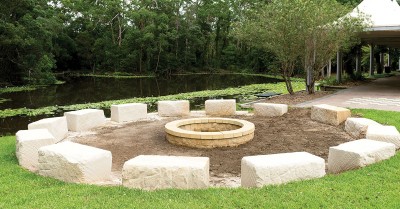A yarning circle is the practice of speaking and listening from the heart, for sitting together to talk and listen and share ideas and stories.
Ever since people first walked the earth, we have been sitting down together and sharing stories.
Yarning circles are a timeless way of learning and have been used by Aboriginal people for thousands of years to discuss issues in an inclusive and collaborative matter.
Objectives Of The Yarning Circle
Yarning together is always focused on strengths not problem solving or criticism. It should focus on abilities, knowledge and capacities rather than on what children do not know or cannot do.
Objectives include:
- encourage deep and honest communication
- learn and practice the art of listening and talking from the heart
- trigger the students to express themselves
- explore factors contributing to conflicts
- share personal stories
Implementing Yarning Circles
In a yarning circle, both children and Educators are provided with an opportunity to speak in a safe place and to share their strengths in an inclusive and collaborative learning environment.
Yarning circles only take 10 minutes, depending on the number and length of contributions and can be conducted indoors or outdoors.
Yarning circles can take a number of formats but the following guidelines generally apply when initiating a yarning circle:
- Sit in a circle - Both children and educators sit in a circle and are encouraged to actively listen to others’ views.
- Introduce focus questions - Yarning circles can be undertaken for many reasons. The Educator introduces the purpose of the yarning circle or the focus question to the children.
- Share ideas and thoughts - The Educator encourages children to take turns to talk and to promote reciprocal sharing and learning. Time can be given for children to write or draw their thoughts after each child speaks. Educators could provide butcher’s paper in the middle of the circle for children to record their thoughts, or hold the circle outside so participate can draw their thoughts in the dirt.
- Reflect -Resolve any actions or issues identified by the yarning circle, or agree to follow up in future yarning circles.
This ritual provides a focus on building trusting relationships, fosters accountability, and provides a safe place to be heard and to respond.
Note:
- Before a child speaks, they can be given an object to hold that signifies that it is their turn to speak. Once it is returned to the middle of the circle, the next child can take the object and continue their turn.
- The message stick is traditionally a wooden cultural artefact with symbolic etchings of significance to the tribe, however you can use objects such as a stone/ shell for example.
Introducing Yarning circles into the service, enables children and educators to discuss issues and openly share their thoughts, ideas and points of view. It is important for children to be present, to have respectful interactions, to be open and honest, to listen deeply, acknowledge others and offer their own thoughts and feelings in turn.
References:
- Yarning Circle. Schools Reconciliation Challenge
- Yarning Circle IN The Literacy Classroom, Acure Research Bank
- Yarning Circles ATSI Perspectives, QCAA Queensland
